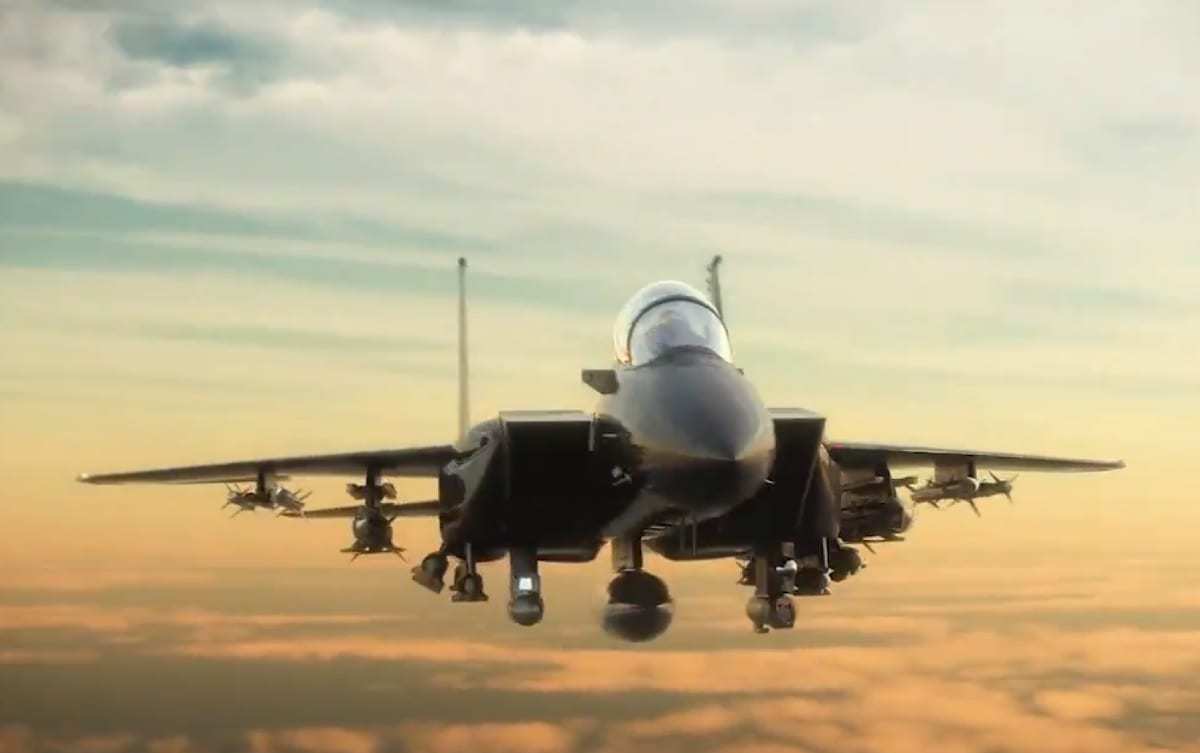Some lawmakers in Missouri, especially those with districts near St. Louis, could have a reason for concern. The Pentagon has put two of Boeing’s workhorse fighter jet programs – the F-15 and F/A-18 Super Hornet – on the chopping block. In addition, the House Appropriations Committee has announced that it could decrease the number of F-15EXs that the United States Air Force could receive as part of the fiscal year 2023 (FY23) budget.
Such cuts won’t impact just the aerospace giant but could send a ripple to supplies throughout the Show-Me State and beyond. The decision is being questioned, especially as the F-15 remains undefeated in combat, and the new and very much improved F-15EX is a truly advanced version of the proven aircraft. The Air Force had announced in 2019 that awarded a nearly $1.2 billion contract for its first lot of eight F-15EX fighter aircraft, which would have replaced the oldest F-15C/Ds in the current fleet.
Much Improved F-15
Though still a fourth-generation fighter, the F-15EX is loaded with newly adapted technologies while the platform was designed to be further upgradeable, which could make it a viable, lethal, high-threat environment-capable attack platform for years to come.
The F-15EX was also developed to feature capabilities that are completely unique to the United States Air Force. It offers fly-by-wire flight controls, new weapons stations, new electronic warfare suite, advanced radar and computer, conformal fuel tanks, and a strengthened airframe. The EX variant also features a deep magazine that could allow it to carry a load of advanced weapons – with a 28 percent larger payload than the F-15E – yet the fighter would require only minimal transitional training and little additional manpower from the older versions of the F-15. According to the Air Force, it will require little to no infrastructure changes.
The service has also estimated F-15EX fighter shared about 70 percent of parts with the current F-15Cs and F-15Es that they could replace. Not only are the original production lines in St. Louis still in place, but the training facilities, maintenance depots, and other infrastructure could be also be readily shifted to F-15EX support. The result was a fighter will be easier to build and quicker to put into service.
At least that was Boeing’s pitch.
It’s Not an F-35 or Even Close
By all accounts, the F-15EX could be seen as a highly capable aircraft, yet aviation experts have been quick to point out that it is still a fourth-generation fighter at heart – even if it is one loaded with newly adapted technologies that promise the ability to keep the platform upgradeable for years to come.
At best, it is a short-term, short-gap solution – and adopting s large numbers of fighters could be seen as a waste of money. It would be best described as a penny smart and pound foolish move, as maintaining a fleet of fourth-generation aircraft – even the best ones – would only be cost-effective in the short term.
The Lockheed Martin F-35 Lightning II may be expensive, but it will still be a reliable and capable aircraft for decades to come. It is also far more than a single aircraft. As a “Joint Strike Fighter,” the F-35 was developed to replace the United States Air Force’s A-10 and F-16, the United State Navy’s F/A-18, and the United States Marine Corps F/A-18 and AV-8B Harrier.
The single-engine, single-seat plane is unique in that it can operate as a conventional-takeoff-and-landing (CTOL) variant (F-35A) for the Air Force, while the Navy’s version (F-35C) was designed to operate from an aircraft carrier (CV). The United States Marine Corps, along with the UK’s Royal Air Force and Royal Navy, employ the F-35B, which can operate as a short-takeoff/vertical landing (STOVL) fighter. As a fifth-generation multirole combat aircraft, the F-35 Lightning II is equipped with advanced stealth capabilities, along with improved agility and maneuverability, as well as enhanced sensor and information fusion, network-enabled operations, and sustainment.
All that makes the F-35 among the world’s most advanced multi-role fighters flying today.
Finally, the F-35 is an aircraft designed for conflicts to come. The F-15 may remain undefeated in combat, but it should fly off into the sunset as a proven champion, and not wait for an enemy to demonstrate that it is past its prime. Investing in a “new” fourth-generation aircraft will only allow our near-peer adversaries to close the gap, or even worse overtake the U.S. Air Force.
As Larry Stutzriem, director of research at the Mitchell Institute for Aerospace Studies warned back in April 2019, “Losing jets and pilots does not save money.” It is more likely a recipe to lose a war.
Now a Senior Editor for 1945, Peter Suciu is a Michigan-based writer who has contributed to more than four dozen magazines, newspapers and websites. He regularly writes about military hardware, firearms history, cybersecurity and international affairs. Peter is also a Contributing Writer for Forbes.

